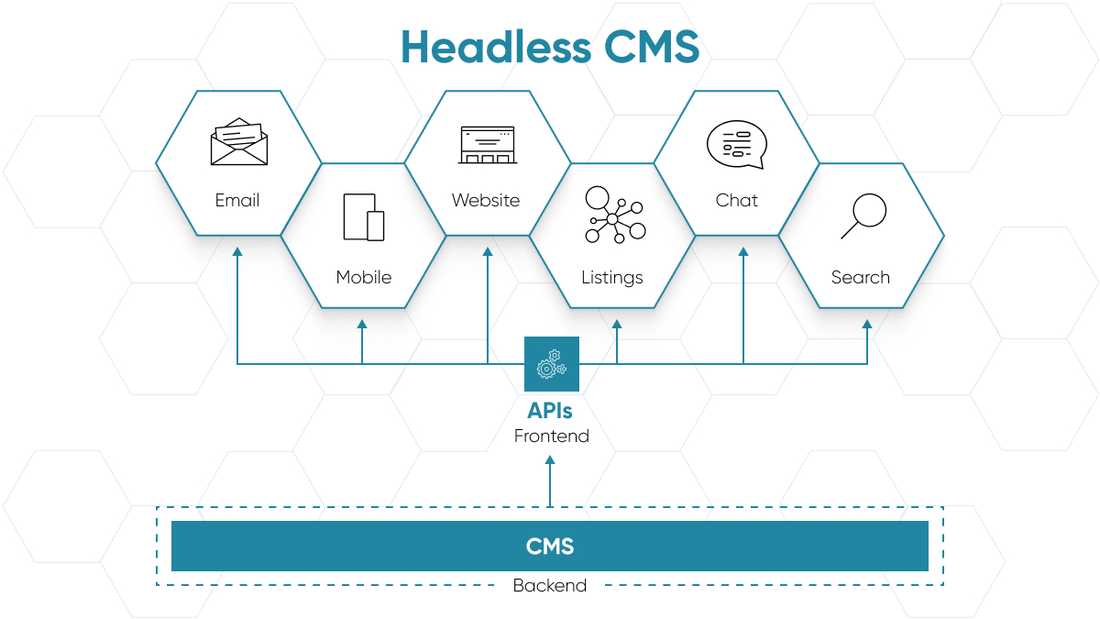
To convince your IT department to invest in a CMS, you’ll need to speak their language.
The healthcare industry today is facing off against new challenges. The impact of the pandemic lingers on, and the industry is still struggling with a shortage of staff and medical personnel. Additionally, organizations are now dealing with:
shrinking budgets due to economic uncertainty
consumerism driving high standards for online experiences
declining insurance reimbursement payments
and increasing costs of providing care
As a result, healthcare organizations are trying to use technology to do more with less. But this is no small feat – especially because the decision on what technology to invest in is nearly entirely left to IT departments. This leaves healthcare marketers' hands tied: no organization will invest in software and technology that serves patient- and consumer-facing purposes without IT's approval and prioritization.
Traditional, monolithic CMSs are holding healthcare marketers back. They're doing less marketing because these legacy systems require more work to manage. But before you can give them the tools they need by way of a CMS, you'll have to make a strong argument for this investment to your IT department.
Here's how healthcare marketers can choose a CMS that meets their needs and their patients' demands for better experiences — and win IT's approval.
IT is more likely to invest in solutions that serve the organization, not just a department or two. To meet this requirement, you'll need a headless CMS.

A headless CMS can be integrated into the techstack of the entire enterprise. Because it supports a composable architecture and integrates with any other solution via an API, a headless CMS fits seamlessly into the overall techstack. This makes it a cross-functional investment — and IT prefers this over a point solution.
For Patients
Your headless CMS is the connective tissue between your information and your patients' online experiences. When you use a headless CMS, patients and consumers can easily find accurate, consistent information wherever they look. That's because information is structured, organized, and syndicated across channels. And this information is available across all owned and non-owned channels — not just your website.
Ultimately, the headless CMS creates better patient experiences by meeting them with accurate information at the exact moment they're searching for it.
For Healthcare Marketers
With a headless CMS, every detail about the organization is stored and managed in one centralized platform. Data can be stored in the headless CMS, and shared everywhere — from apps to contact center knowledge bases. Storing data in your headless CMS also breaks down information silos and uncovers insights about your organization and your patients. Then, healthcare marketers can use this data to make informed decisions, like which channels are best for patient acquisition.
The headless CMS also makes updates at scale, so marketers only need to update information once to update it everywhere. This is especially helpful as the organization grows and changes over time. Rebrands, contact information updates, and important notices can be shared across hundreds of webpages (and other owned and non-owned channels). High volumes of updates can be made with only one push of a button — saving valuable time when marketers are being asked to do more with less.
For IT Departments
IT departments appreciate headless CMSs because they are better for organizations' budgets. Investing in dozens of single-use point solutions means paying hundreds of dollars per month, per vendor. With its less complicated infrastructure, a headless CMS is less expensive than a traditional, monolithic CMS — and it's easier to maintain, too.
A headless CMS also protects the IT department's time and bandwidth better than a traditional CMS. Resources aren't used for routine tasks like hunting down broken links, updating 404 redirects, or manually deprecating old landing pages. Because the headless CMS is easy to use, marketers can solve these issues in the platform without taking time and resources away from IT teams. Instead, your IT department can stay focused on EMRs and supporting the technology needs of the clinic.
To convince your IT department to invest in a headless CMS, you'll need to speak the language of IT. You'll want to:
Highlight cost savings: Instead of dozens of smaller, single-use point solutions that add up quickly over time, the headless CMS serves as the foundation of a lean but powerful martech stack.
Showcase the platform's flexibility: The headless CMS can deliver content to many endpoints, not just the website. This allows healthcare marketers to manage more channels — all from only one platform. Your IT department will appreciate this because it means they won't need to replace this solution (or invest in additional solutions) whenever marketing inevitably needs to manage a new channel.
Give use cases on scalability: Show the IT team hypothetical use cases where the headless CMS will support the organization as it grows. As an example, you can point out that you'll be able to use content from the headless CMS in other platforms, like your call center or your app.
Demonstrate that it's easy to use: Calculate the amount of time that your IT team is spending on updates to your current CMS. Show them that once marketers have the ability to make changes without submitting tickets to their queue, IT's time is freed for more true IT initiatives (like digital transformation projects and EMR fire drills).
Remind them of the patients: Everything comes back to the patients, and a headless CMS reduces friction in their online experiences. Talk to your IT department about the importance of metrics like your NPS scores — and how a headless CMS can help improve them.
A headless CMS bridges the divide between what healthcare marketers want patients to know and the information patients are actually looking for. It's key to presenting consistent, accurate information across many channels, both owned and non-owned. Ultimately, a headless CMS improves patient experiences in ways that are simply unscalable if you're stuck with a traditional, monolithic CMS.
Your IT department will understand this. And once you've laid out the benefits to their team as well, the decision will come easily. Better patient experiences start with a better CMS — and a better CMS is headless.
Up Next: Why a Great Patient Experience Starts with Your CMS
Healthcare marketers can use a headless CMS to create consistency across all the channels their patients use to make an informed decision about their care.
The original version of this page was published at: https://www.yext.com/blog/2023/09/a-guide-for-healthcare-marketers-winning-its-approval-on-a-cms
Yext (NYSE: YEXT) helps organizations answer every question about their business. Yext's Answers Platform collects and organizes content into a Knowledge Graph, then leverages a complementary set o... Read more
Online reviews have emerged as one of the most important aspects of digital marketing and reputation management, across nearly every consumer-facing industry from food services to ...read more
Google is on the receiving end of an average 63,000 searches per second each day. That equates to some 3.8 million searches per minute, 5.6 billion searches per day, and more ...read more
As a growth marketer, one of the biggest pains of my job is branded paid search.Every day we have to compete and pay for traffic from people who are already searching for our brand ...read more
ENT and Allergy Associates Drives Appointment Conversions with YextENT and Allergy Associates is the largest ear, nose, throat and allergy practice in the country, with over 200 physicians ...read more